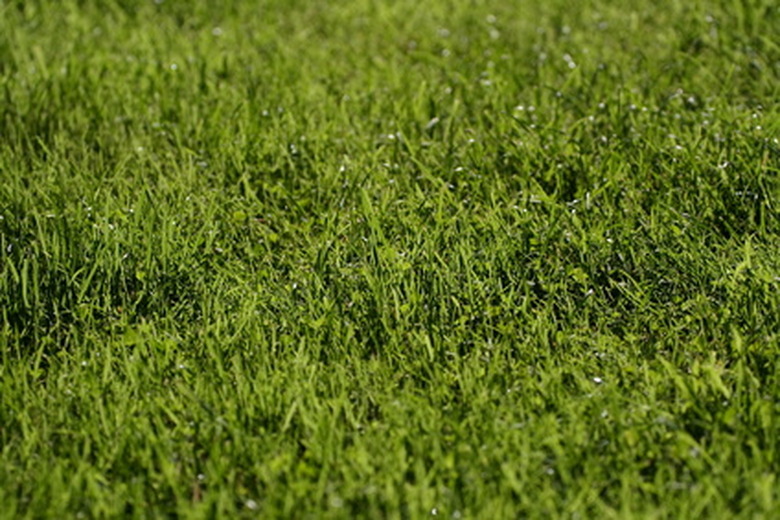How Do I Speed Up Grass Seed Germination?
Getting grass seed to grow entails time, patience and above all, the proper conditions for seed germination. Grass seed requires soil, water, warm temperatures and nutrients in order to germinate.
Some grass types, such as Kentucky bluegrass (Poa pratensis, USDA zones 3-7), germinate more slowly than others, such as ryegrass (Lolium spp., zones 3-8, depending on species and cultivar) . Choose the right type of grass for your region to ensure good germination and establishment of grass seed. Try pregerminating your grass seed to ensure good germination overall and the quick development of a green, healthy lawn that you can enjoy for years to come.
Tip
Pregerminate your grass seed, which allows it to absorb water and speeds up germination.
Prepare the Location
1. Till the Soil
Prepare the ground carefully. Soil should be tilled to a depth of 4 to 6 inches and broken up to a fine consistency. Remove all debris, rocks and weeds that could prevent good seed-to-soil contact. Tilling helps ensure a firm, level surface with no rough spots or depressions that could mar the look of your lawn or trip up visitors.
2. Add Amendments and Fertilizer
Condition the soil by adding amendments such as compost, peat moss or vermiculite for good drainage. Add a good starter fertilizer with a ratio such as 1-2-1 nitrogen-phosphorus-potassium composition, opt for a mix especially formulated for lawns. Work this into the top few inches of soil. Soil testing is recommended to determine if any additional nutrients should be added or if soil pH needs alteration. You can get soil testing kits from your local garden center or local Cooperative Extension Service.
3. Rake the Soil
Rake the soil to an even level throughout. An even surface keeps the seed in contact with soil for quicker germination and better rooting.
Pregerminate and Plant the Seeds
Pregermination allows grass seed to absorb water to help it swell and germinate before you place into the prepared soil. Turfgrass contractors often pregerminate when hydroseeding lawns, which is the spraying of a grass seed and water mixture over an area to be seeded.
Also important is choosing the right seed. Most homeowners do best with a mixture of Kentucky bluegrass and perennial ryegrass and fine fescue (Festuca spp., zones 3-9, depending on species and cultivar). Kentucky bluegrass spreads by underground rhizomes that help your lawn recover after damage.
1. Soak the Seeds
Place the seed in a bucket with a moist compost mixture for three or four days. You will notice that the seed swells and produces a small, white growth.
2. Dry the Seeds
You need to dry the seeds a bit so you can broadcast them. Spread them out on a concrete floor and allow to dry for 12 hours. You can then begin sowing the pregerminated seed on your lawn area. Make sure you sow the seeds within 24 hours.
3. Sow the Seeds
Spread the pregerminated seed over the prepared soil. Make sure seeds are in good contact with soil surface, as this is important for rooting and establishment.
4. Cover the Seeds With Mulch
Cover seeds with a very light mulch layer of compost or straw. Do not cover thickly because grass seed needs exposure to sunlight.
5. Water the Seeds Frequently
Water the pregerminated seeds frequently. Lightly spray three to four times per day for three to four weeks. The pregerminated seeds will be evident in three to four days, and it is important to keep them moist to allow rooting.
